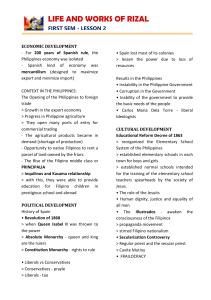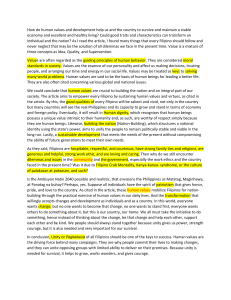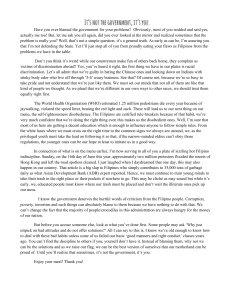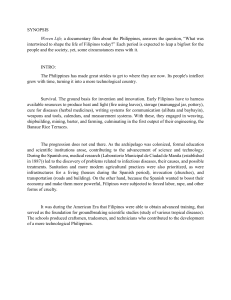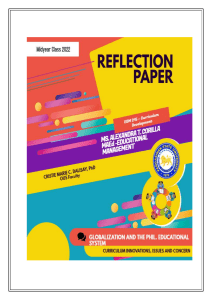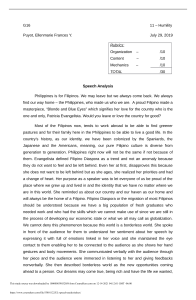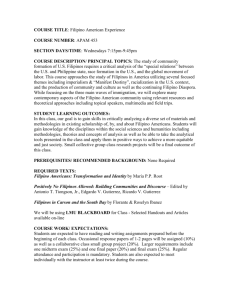Philippine Language Policies: Bilingual Education & Challenges
advertisement
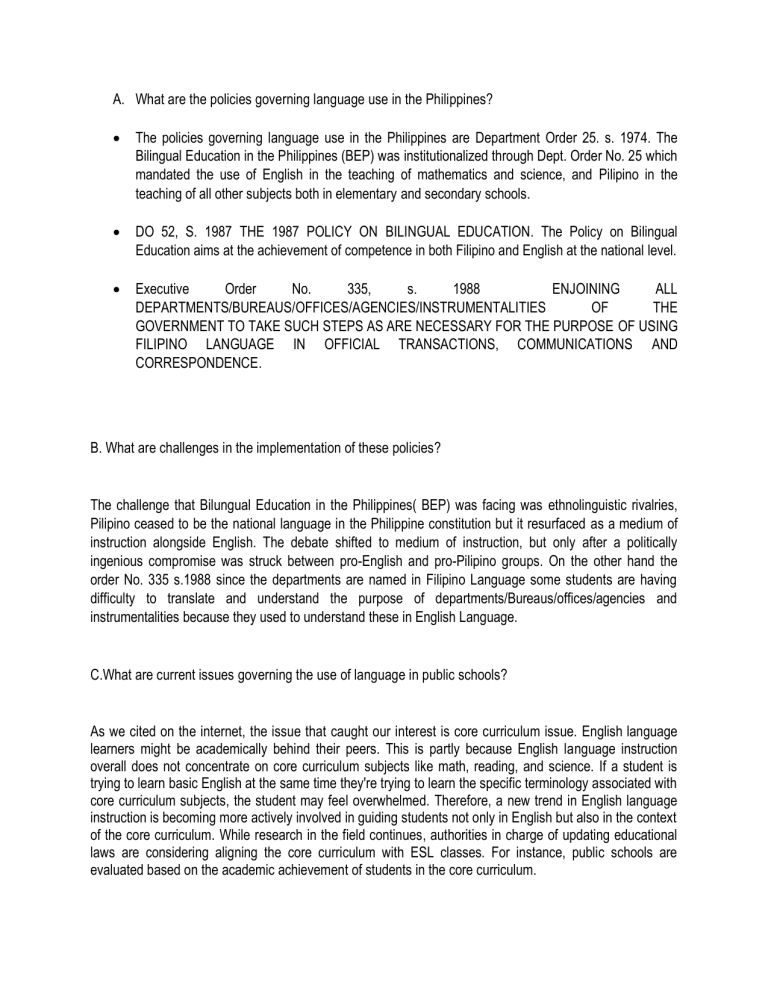
A. What are the policies governing language use in the Philippines? The policies governing language use in the Philippines are Department Order 25. s. 1974. The Bilingual Education in the Philippines (BEP) was institutionalized through Dept. Order No. 25 which mandated the use of English in the teaching of mathematics and science, and Pilipino in the teaching of all other subjects both in elementary and secondary schools. DO 52, S. 1987 THE 1987 POLICY ON BILINGUAL EDUCATION. The Policy on Bilingual Education aims at the achievement of competence in both Filipino and English at the national level. Executive Order No. 335, s. 1988 ENJOINING ALL DEPARTMENTS/BUREAUS/OFFICES/AGENCIES/INSTRUMENTALITIES OF THE GOVERNMENT TO TAKE SUCH STEPS AS ARE NECESSARY FOR THE PURPOSE OF USING FILIPINO LANGUAGE IN OFFICIAL TRANSACTIONS, COMMUNICATIONS AND CORRESPONDENCE. B. What are challenges in the implementation of these policies? The challenge that Bilungual Education in the Philippines( BEP) was facing was ethnolinguistic rivalries, Pilipino ceased to be the national language in the Philippine constitution but it resurfaced as a medium of instruction alongside English. The debate shifted to medium of instruction, but only after a politically ingenious compromise was struck between pro-English and pro-Pilipino groups. On the other hand the order No. 335 s.1988 since the departments are named in Filipino Language some students are having difficulty to translate and understand the purpose of departments/Bureaus/offices/agencies and instrumentalities because they used to understand these in English Language. C.What are current issues governing the use of language in public schools? As we cited on the internet, the issue that caught our interest is core curriculum issue. English language learners might be academically behind their peers. This is partly because English language instruction overall does not concentrate on core curriculum subjects like math, reading, and science. If a student is trying to learn basic English at the same time they're trying to learn the specific terminology associated with core curriculum subjects, the student may feel overwhelmed. Therefore, a new trend in English language instruction is becoming more actively involved in guiding students not only in English but also in the context of the core curriculum. While research in the field continues, authorities in charge of updating educational laws are considering aligning the core curriculum with ESL classes. For instance, public schools are evaluated based on the academic achievement of students in the core curriculum. D. Over the years, how have these policies aid government institutions in upholding and propagating the national language? These policies aid government institutions in some instances like one of the selling points of our country in global labor markets is the proficiency of most Filipinos in spoken and written English, thus labor export model has been only possible because of high English proficiency of most Filipinos. Had the Philippines never used English as second lingua franca but instead, Spanish for example, our country would have been more open to foreign direct investments like most Latin American countries because we couldn’t sell our cheap labor to white Anglophone or Gulf Arab countries because we don’t speak English. Filipinos are open too much of the international world. English being the lingua franca of the world, it’s hard to find a country where English is not spoken or understood. Since Filipinos are taught the English language in school, they are equiped to work and live overseas especially in English-speaking countries. English acts as a neutral language in the broad sociolinguistic Philippines. People from different regions that speak other languages or dialects may choose to converse in English. Most can converse in Filipino however.

